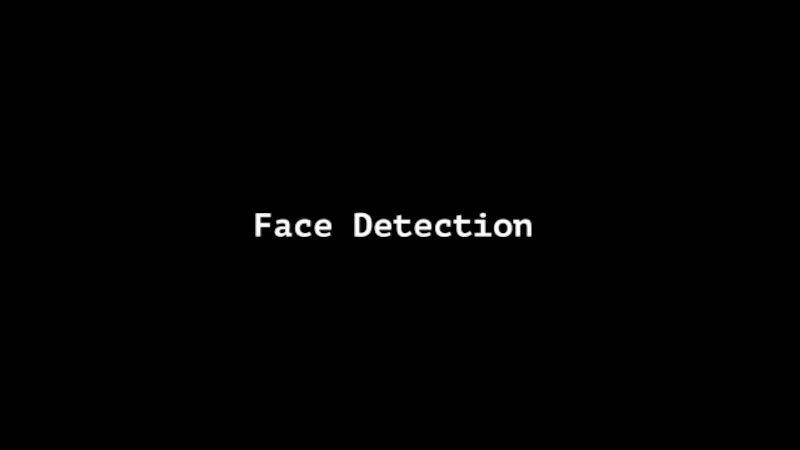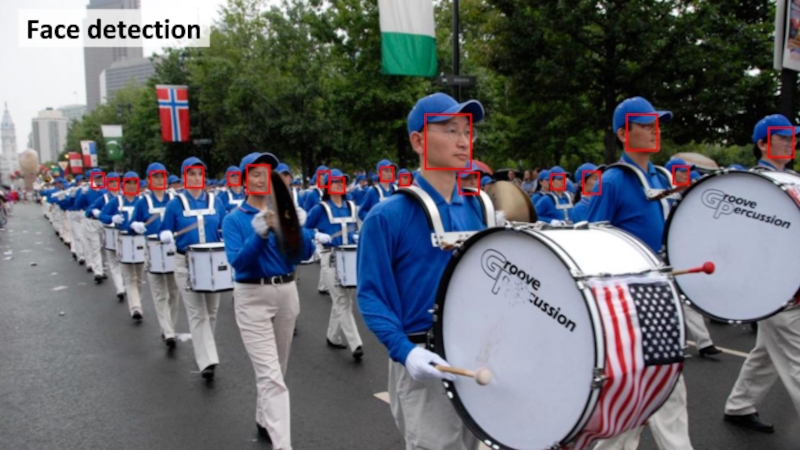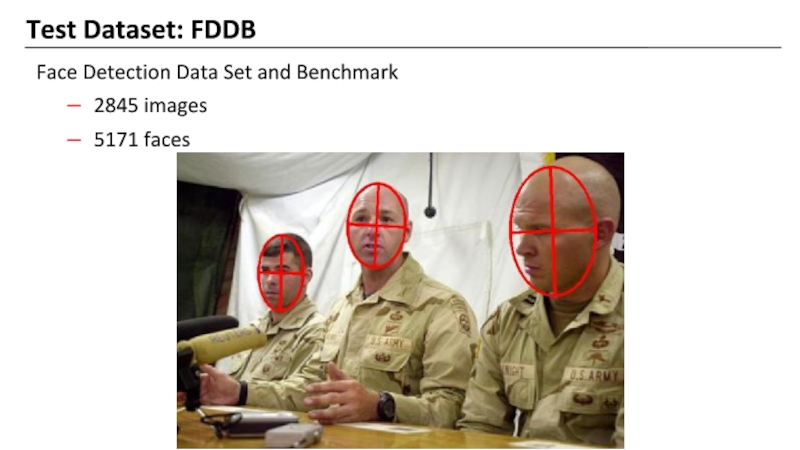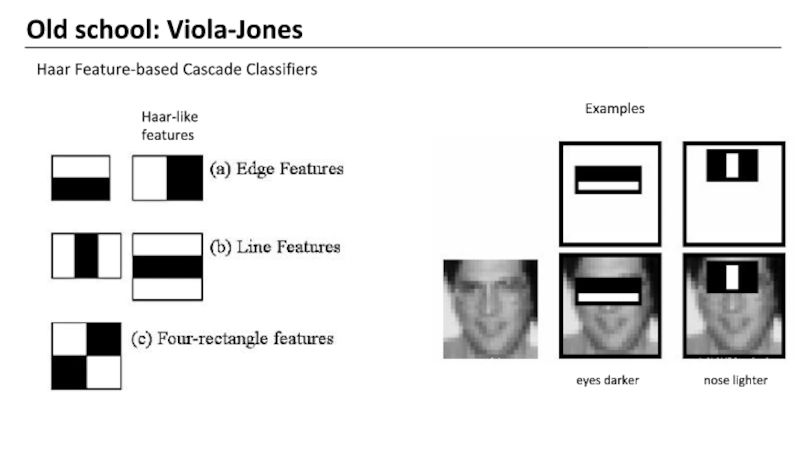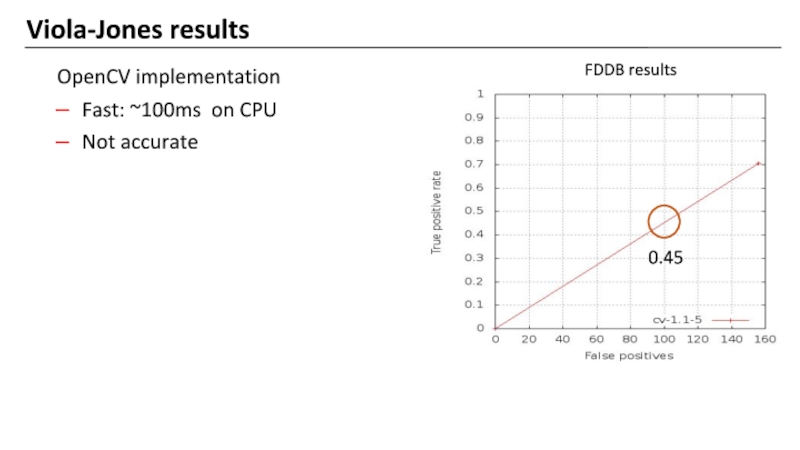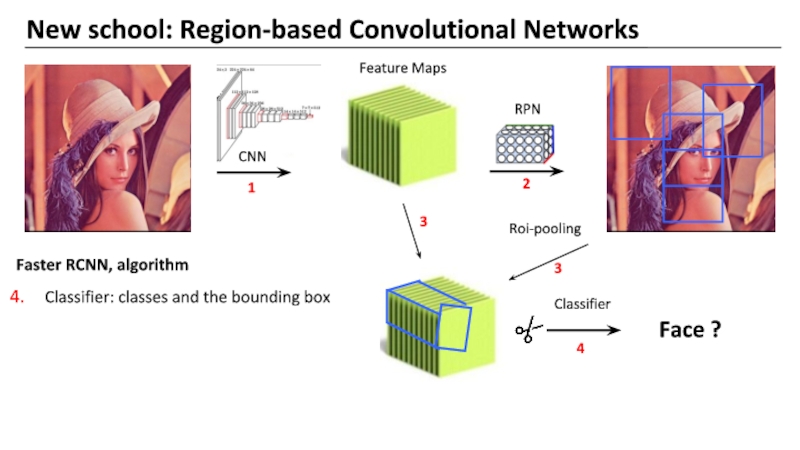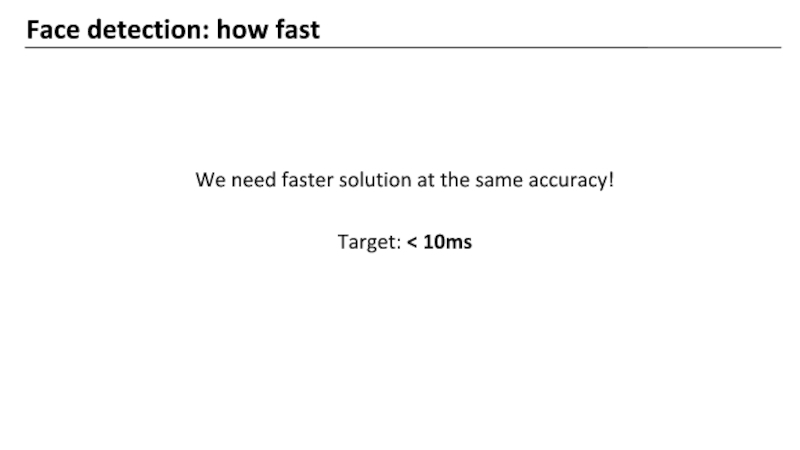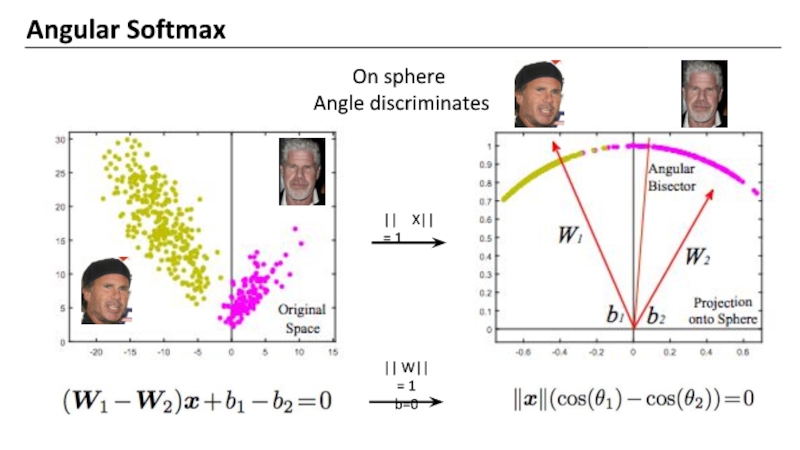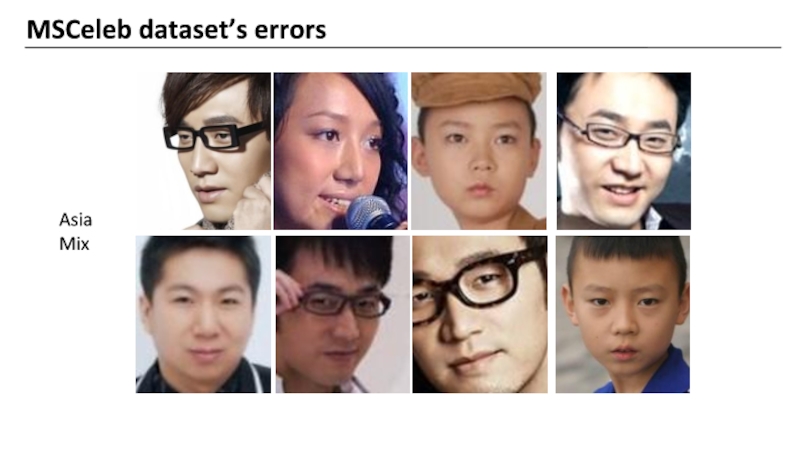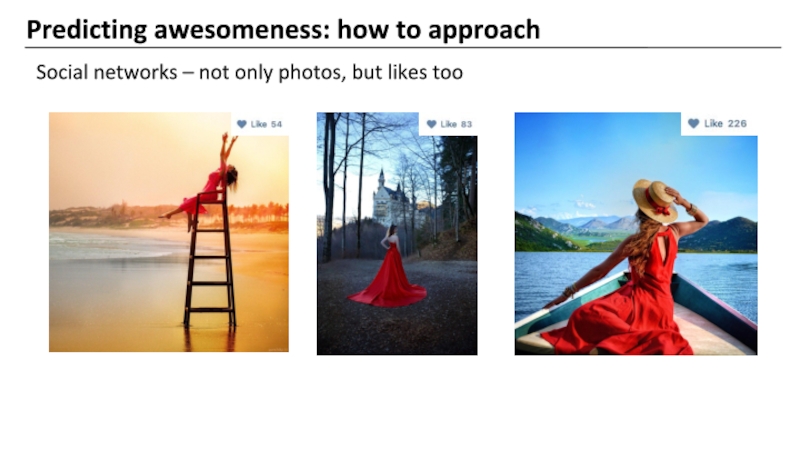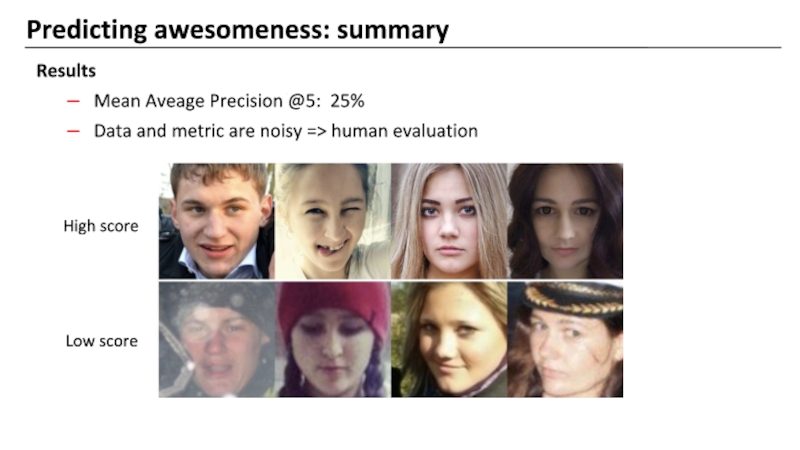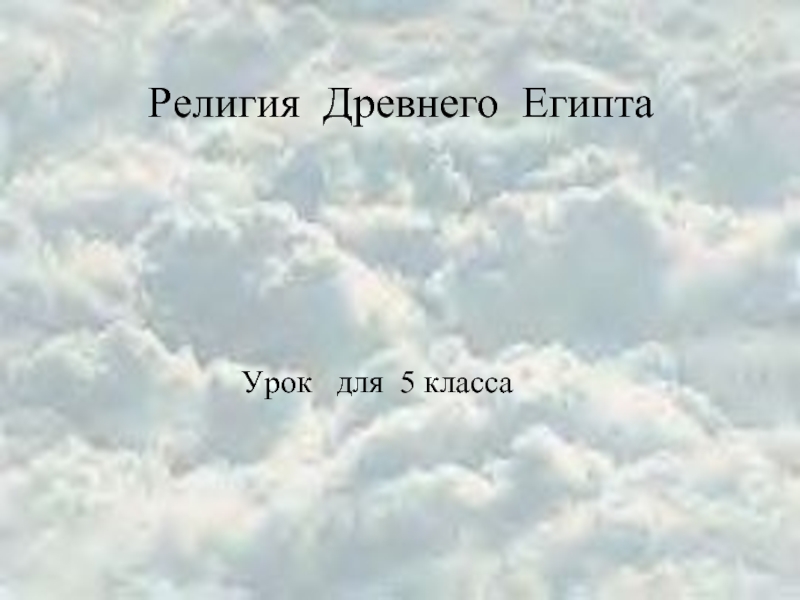- Главная
- Разное
- Дизайн
- Бизнес и предпринимательство
- Аналитика
- Образование
- Развлечения
- Красота и здоровье
- Финансы
- Государство
- Путешествия
- Спорт
- Недвижимость
- Армия
- Графика
- Культурология
- Еда и кулинария
- Лингвистика
- Английский язык
- Астрономия
- Алгебра
- Биология
- География
- Детские презентации
- Информатика
- История
- Литература
- Маркетинг
- Математика
- Медицина
- Менеджмент
- Музыка
- МХК
- Немецкий язык
- ОБЖ
- Обществознание
- Окружающий мир
- Педагогика
- Русский язык
- Технология
- Физика
- Философия
- Химия
- Шаблоны, картинки для презентаций
- Экология
- Экономика
- Юриспруденция
Face Recognition: From Scratch to Hatch презентация
Содержание
- 2. Face Recognition in Cloud@Mail.ru Users upload
- 3. Social networks
- 5. edges object parts (combination of edges) object models
- 7. Face detection
- 8. Auxiliary task: facial landmarks Face alignment: rotation Goal: make it easier for Face Recognition
- 9. Train Datasets Wider 32k images 494k faces
- 10. Test Dataset: FDDB Face Detection Data Set and Benchmark 2845 images 5171 faces
- 11. Old school: Viola-Jones Haar Feature-based Cascade Classifiers
- 12. Viola-Jones algorithm: training Face or Not
- 13. Viola-Jones algorithm: inference Stages Face Yes Yes
- 14. Viola-Jones results OpenCV implementation Fast: ~100ms on CPU Not accurate
- 15. Pre-trained network: extracting features New school: Region-based
- 16. Comparison: Viola-Jones vs R-FCN Results 92% accuracy (R-FCN) FDDB results 40ms on GPU (slow)
- 17. Face detection: how fast We need faster
- 18. Alternative: MTCNN Cascade of 3 CNN Resize
- 19. Comparison: MTCNN vs R-FCN MTCNN + Faster
- 21. What is TensorRT NVIDIA TensorRT is a
- 22. TensorRT: layer optimizations Horizontal fusion Concat elision Vertical layer fusion
- 23. TensorRT: downsides Caffe + TensorFlow supported Fixed input/batch size Basic layers support
- 24. Batch processing Problem Image size is fixed,
- 25. Batch processing Results Single run Enables batch processing
- 26. TensorRT: layers Problem No PReLU layer
- 27. Face detection: inference Target:
- 29. Face recognition task Goal – to compare
- 30. Training set: MSCeleb Top 100k celebrities 10
- 31. Small test dataset: LFW Labeled Faces in
- 32. Large test dataset: Megaface Identification under up
- 33. Megaface leaderboard ~83% ~98% cleaned
- 34. Metric Learning
- 35. Classification Train CNN to predict classes Pray for good latent space
- 36. Softmax Learned features only separable but not discriminative The resulting features are not sufficiently effective
- 37. We need metric learning Tightness of the cluster Discriminative features
- 38. Triplet loss Features Identity -> single point
- 39. Choosing triplets Crucial problem How to choose
- 40. Choosing triplets: trap
- 41. Choosing triplets: trap positive ~ negative
- 42. Choosing triplets: trap Instead
- 43. Choosing triplets: trap Selecting hardest negative may lead to the collapse early in training
- 44. Choosing triplets: semi-hard positive < negative < positive + α
- 45. Triplet loss: summary Overview Requires large batches,
- 46. Center loss Idea: pull points to class
- 47. Center loss: structure Without classification loss –
- 48. Center Loss: different lambdas λ = 10-7
- 49. Center Loss: different lambdas λ = 10-6
- 50. Center Loss: different lambdas λ = 10-5
- 51. Center loss: summary Overview Intra-class compactness and
- 52. Tricks: augmentation Test time augmentation Flip image Average embeddings Compute 2 embeddings
- 53. Tricks: alignment Rotation Kabsch algorithm - the optimal rotation matrix that minimizes the RMSD
- 54. Angular Softmax On sphere Angle discriminates
- 55. Angular Softmax
- 56. Angular Softmax: different «m»
- 57. Angular softmax: summary Overview Works only on
- 58. Metric learning: summary Softmax < Triplet <
- 59. Fighting errors
- 60. Errors after MSCeleb: children
- 61. Errors after MSCeleb: asian Problem
- 62. How to fix these errors ? It’s
- 63. A way to construct dataset Cleaning
- 64. MSCeleb dataset’s errors MSCeleb is constructed by
- 65. MSCeleb dataset’s errors Female + Male
- 66. MSCeleb dataset’s errors Asia Mix
- 67. MSCeleb dataset’s errors Dataset has been shrinked
- 68. Results on new datasets Datasets Train: MSCeleb
- 69. How to handle big dataset It seems
- 70. Softmax Approximation Algorithm Perform K-Means clustering using current FR model
- 71. Softmax Approximation Algorithm Perform K-Means clustering using
- 72. Softmax Approximation Pros Prevents fusing of the
- 73. Fighting errors on production
- 74. Errors: blur Problem Detector yields blurry
- 75. Laplacian in action Low variance High variance
- 76. Errors: body parts Detection mistakes form clusters
- 77. Errors: diagrams & mushrooms
- 78. Fixing trash clusters There is similarity between “no faces”!
- 79. Workaround Algorithm Construct «trash» dataset Compute
- 80. Spectacular results
- 81. Fun: new governors Recently appointed governors are almost twins, but FR distinguishes them
- 82. Over years Face recognition algorithm captures similarity
- 83. Over years
- 84. Summary Use TensorRT to speed up
- 86. Auxiliary
- 87. Best avatar Problem How to pick an
- 88. Predicting awesomeness: how to approach Social networks
- 89. Predicting awesomeness: dataset Awesomeness (A) = likes/audience A=18% A=27% A=75%
- 90. Results Mean Aveage Precision @5: 25% Data
- 91. Predicting awesomeness: incorporating into FR One more
Слайд 2Face Recognition in Cloud@Mail.ru
Users upload photos to Cloud
Backend identifies
Слайд 8Auxiliary task: facial landmarks
Face alignment: rotation
Goal: make it easier for Face
Слайд 9Train Datasets
Wider
32k images
494k faces
Celeba
200k images, 10k persons
Landmarks, 40 binary attributes
Слайд 13Viola-Jones algorithm: inference
Stages
Face
Yes
Yes
Stage 1
Stage 2
Stage N
Optimization
Features are grouped into stages
If a
Слайд 15Pre-trained network: extracting features
New school: Region-based Convolutional Networks
Faster RCNN, algorithm
Face ?
Region proposal network
RoI-pooling: extract corresponding tensor
Classifier: classes and the bounding box
Слайд 18Alternative: MTCNN
Cascade of 3 CNN
Resize to different scales
Proposal -> candidates +
Refine -> calibration
Output -> b-boxes + landmarks
Слайд 21What is TensorRT
NVIDIA TensorRT is a high-performance deep learning inference optimizer
Features
Improves
FP16 & INT8 support
Effective at small batch-sizes
Слайд 24Batch processing
Problem
Image size is fixed, but
MTCNN works at different scales
Solution
Pyramid on
Слайд 26TensorRT: layers
Problem
No PReLU layer => default pre-trained model can’t be used
Retrained
-20%
Слайд 27Face detection: inference
Target: < 10 ms
Result: 8.8 ms
Ingredients
MTCNN
Batch processing
TensorRT
Слайд 29Face recognition task
Goal – to compare faces
How? To learn metric
To enable
Слайд 30Training set: MSCeleb
Top 100k celebrities
10 Million images, 100 per person
Noisy: constructed
Слайд 31Small test dataset: LFW
Labeled Faces in the Wild Home
13k images from
1680 persons have >= 2 photos
Слайд 32Large test dataset: Megaface
Identification under up to 1 million “distractors”
530 people
Слайд 36Softmax
Learned features only separable but not discriminative
The resulting features are not
Слайд 38Triplet loss
Features
Identity -> single point
Enforces a margin between persons
positive + α
Слайд 39Choosing triplets
Crucial problem
How to choose triplets ? Useful triplets = hardest
Solution
Hard-mining within a large mini-batch (>1000)
Слайд 43Choosing triplets: trap
Selecting hardest negative may lead to the collapse early
Слайд 45Triplet loss: summary
Overview
Requires large batches, margin tuning
Slow convergence
Opensource Code
Openface (Torch)
suboptimal implementation
Facenet,
Слайд 47Center loss: structure
Without classification loss – collapses
Softmax
Loss
Center
Loss
Final loss = Softmax loss
Слайд 51Center loss: summary
Overview
Intra-class compactness and inter-class separability
Good performance at several other
Opensource Code
Caffe (original, Megaface - 65%)
Слайд 53Tricks: alignment
Rotation
Kabsch algorithm - the optimal rotation matrix that minimizes the
Слайд 57Angular softmax: summary
Overview
Works only on small datasets
Slight modification of the loss
Various modification of the loss function
Слайд 58Metric learning: summary
Softmax < Triplet < Center < A-Softmax
A-Softmax
With bells and
Overall
Rule of thumb: use Center loss
Metric learning may improve classification performance
Слайд 60Errors after MSCeleb: children
Problem
Children all look alike
Consequence
Average embedding ~ single point
Слайд 61Errors after MSCeleb: asian
Problem
Face Recognition’s intolerant to Asians
Reason
Dataset doesn’t contain enough
Слайд 62How to fix these errors ?
It’s all about data, we need
Natural choice – avatars of social networks
Слайд 63A way to construct dataset
Cleaning algorithm
Face detection
Face recognition -> embeddings
Hierarchical clustering
Pick the largest cluster as a person
Iterate after each model improvement
Слайд 64MSCeleb dataset’s errors
MSCeleb is constructed by leveraging search engines
Joe Eszterhas and
=
Слайд 67MSCeleb dataset’s errors
Dataset has been shrinked from 100k to 46k celebrities
Random
search
Слайд 68Results on new datasets
Datasets
Train:
MSCeleb (46k)
VK-train (200k)
Test
MegaVK
Sets for children and asians
Слайд 69How to handle big dataset
It seems we can add more data
Problems
Memory consumption (Softmax)
Computational costs
A lot of noise in gradients
Слайд 71Softmax Approximation
Algorithm
Perform K-Means clustering using current FR model
Two Softmax heads:
Predicts cluster
Class within the true cluster
Слайд 72Softmax Approximation
Pros
Prevents fusing of the clusters
Does hard-negative mining
Clusters can be specified
Children
Asian
Results
Doesn’t
Decreases memory consumption (K times)
Слайд 74Errors: blur
Problem
Detector yields blurry photos
Recognition forms «blurry clusters»
Solution
Laplacian – 2nd order
Слайд 79Workaround
Algorithm
Construct «trash» dataset
Compute average embedding
Every point inside the sphere –
Results
ROC AUC 97%
Слайд 82Over years
Face recognition algorithm captures similarity across years
Although we didn’t
Слайд 84Summary
Use TensorRT to speed up inference
Metric learning: use Center loss by
Clean your data thoroughly
Understanding CNN helps to fight errors
Слайд 87Best avatar
Problem
How to pick an avatar for a person ?
Solution
Train model
Слайд 90Results
Mean Aveage Precision @5: 25%
Data and metric are noisy => human
Predicting awesomeness: summary





